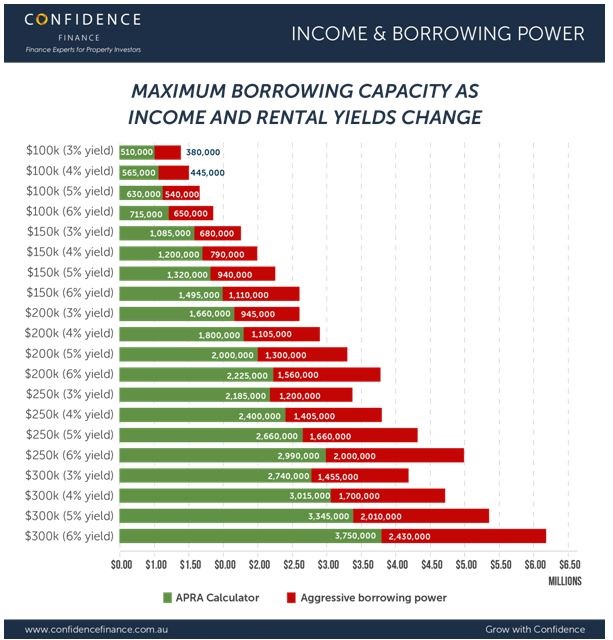How Increasing Your Income is the BEST solution to APRA changes
Promoted by Confidence Finance.
Increasing income is the one bullet-proof way for investors to protect themselves against any finance market changes. It is also the fastest way to accelerate plans towards financial security and a good risk mitigation strategy. Increasing income is a solution to the potential P&I cliff investors face. Importantly, it is also the best way to get more money from banks.

Investors have a serviceability ‘wall’ that is the maximum lenders are willing to lend to. There are techniques investors can use to expand their borrowing power (e.g.strategic lender selection). However, these techniques can only help expand borrowing power at the margins. Every investor has a borrowing power wall that’s fundamentally tied to the income they earn.
A common misconception of new investors is that ‘saving’ is the way to generate large amounts of wealth. While ‘saving’ more of your income will help generate stocks of capital to use as deposits, it has little impact on your borrowing power. Lenders will take minimum ‘floor’ assumptions about your expense profile, regardless of how frugal you are. Also, the amount you save is capped by the amount you earn.
On the flip side, for investors looking to build large investment portfolios and continue to accumulate over time, there is no substitute to increasing your income over time. Increasing income improves borrowing power & has no real upper bound (ask Bill Gates!)
Below we have modelled out maximum borrowing capacities for different income profiles to illustrate the power of increasing income.
The above chart shows a couple’s combined gross income. This couple rent at $400p.w, earn a 50/50 split of income, has minimal living expenses and has a $6k credit card. The green bars show their borrowing power with mainstream lenders. The red bars indicate additional borrowing power they may be able to obtain from non-bank lenders with more generous borrowing power calculators. Note that this modelling was completed in June 2017 and there have been minor lending market changes since then.
The downside? In a low wage growth economy, increasing income is far easier said than done. Some strategies property investors can use to add to their income& borrowing capacity include:
- Improving their investment portfolio’s yield profile. In the below chart, increasing the portfolio yield from 3% to 6% can have a dramatic 50% rise in an investor borrowing capacity overall.
- Adding a secondary income source – investing in property is far more limited when relying on one income. Whether that be a second job or combining with a partner, additional income sources can propel investors servicing forward.
Note that all income sources are not treated equally by lenders, so some increases in income are more powerful than others. For example, base salary income rises have a multiple around 7, while rental income & non-base income rises (overtime, commission, bonuses) has a multiple closer to 5. This means that for every $1 if additional income you earn, there is a $7 boost to borrowing power. This is a little more than the $5 increase from rental income, making base salary rises a great way for investors to continue growing their portfolio in an environment of restricted credit growth.
More analysis and a detailed explanation of how to manage your portfolio safely is available in our E-book: How to Grow a Multi-Million Dollar Portfolio.
At Confidence Finance, we believe that long term property investing is a game of finance and property finance is a science. Understanding how each part of lending works is our specialty. We use this insight to develop a unique understanding about how lending works in Australia. We then use this expertise to help our clients grow, finance and protect successful property portfolios.
About the author:

Redom Syed is the CEO & Founder of Confidence Finance. Redom is one of Australia’s Top 100 brokers.Prior to becoming a finance broker, Redom worked as an Economist at Federal Treasury, where he became a published author on the design of the International Financial System.



